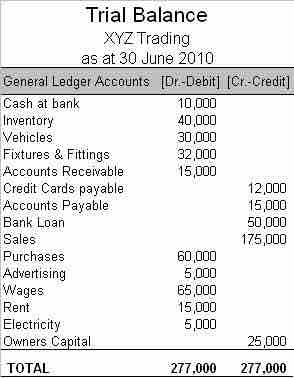The Post-closing Trial Balance
The post-closing trial balance is the last step in the accounting cycle. It is prepared after all of that period's business transactions have been posted to the General Ledger via journal entries. The post-closing trial balance can only be prepared after each closing entry has been posted to the General Ledger. The purpose of closing entries is to transfer the balances of the temporary accounts (expenses, revenues, gains, etc.) to the retained earnings account. After the closing entries are posted, these temporary accounts will have a zero balance. The permanent balance sheet accounts will appear on the post-closing trial balance with their balances. When the post-closing trial balance is run, the zero balance temporary accounts will not appear. However, all the other accounts having non-negative balances are listed, including the retained earnings account. As with the trial balance, the purpose of the post-closing trial balance is to ensure that debits equal credits.

The Trial Balance
The post-closing trial balance proves debits still equal credits after the closing entries have been made.
Why the Post-Closing Trial Balance Is Necessary
While each accounting period has a beginning and an end, the periods do use information from the previous period. That is why it is necessary to run a post-closing trial balance. The preparation of a post-closing trial balance serves as a check on the accuracy of the closing process and ensures that the books are in balance at the start of the new accounting period. The post-closing trial balance differs from the adjusted trial balance in only two important respects: It excludes all temporary accounts since they have been closed, and it updates the retained earnings account to its proper ending balance.